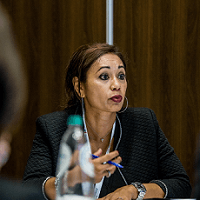MSP for lower volume countries
BLOG

HOW TO ROLL OUT GLOBAL MANAGED SERVICE PROGRAMMES TO LOWER VOLUME COUNTRIES

In our recent ProcureCon Total Talent Management roundtable we chaired a debate with procurement and contingent workforce professionals, from programmes of all sizes and maturity levels, on how to roll out global contingent workforce programmes to lower volume countries. In this blog we summarise the conclusions we drew.
As organisations seek to leverage global scale, compare process performance to unlock efficiencies, and take a more holistic total talent view, they are now seeking to mop up that final 10-20% that may previously have considered too low volume.
However, no-one likes change happening to them, and whilst globalisation is making the world a smaller place there’s no escaping that each market comes with its own context, regulations and requirements.
It’s no surprise then that the initial reaction when trying to roll-out a headquarter-driven global initiative, such as a managed service programme (MSP), is “no thank you, this won’t work for us” at worst, or “ok, we accept the implementation because global tells us we have to, but we are not going to pay for it” at best.
So how do you overcome all of this?
1. Where possible engage early
Early engagement (preferably before going to market with an RFP) with all countries is crucial. This means a lot of investment in communication, travelling and telling the global story over and over again. It sounds like hard work because it is, but it will lead to a smoother adoption afterwards, and save you effort in the long run.
When it comes to global decisions on outsourcing programmes the experience of smaller countries is typically that the change is “just happening to them” instead of them feeling engaged. However, if you want your solution to work and capture the true picture then listen to local needs, anticipate to them in the ‘solutioning’.
It’s easy to get carried away in scope creep, and we’re not saying you forget the global objectives. At Hays Talent Solutions we tend to recommend the 80/20 rule, if it works for 80% of people then go with this. However, if you don’t hear out the differences now, you’ll never achieve a true total talent view.
2. Flex your model and solutions to address local dynamics
Internal stakeholder management alone is not enough, each local market has a different dynamic, culture and market maturity. So thorough local due diligence on all aspects is important, and considering the different models and flex you can build into your programmes.
For example, one of our multi-country clients has a very strong employer brand in their home country for the headquarters, but in a neighbouring country it was a very different story. This difference in employer branding clearly impacts the local sourcing strategy and we also identified that this required a different solution of the headquarter country model, whilst still allowing for centrally comparable reporting.
3. First impressions count
We all know the saying you never get a second chance to make a first impression. This is particularly true in implementations, so make your first step excellent.
Specifically for lower volume countries this means keeping local added value of the programme in mind and be flexible in offering solutions in different models. For example, if you have an established programme, but MSP is new to that country or part of the company, there likely is still the initial need for transparency of contingent workforce spend you started out with.
To help them improve their compliance, you could start with a worker tracker programme and have this evolve towards a light or full MSP programme if ever needed. It’s no use throwing in a heavy fully fledged MSP into a country if they aren’t ready for it.
Get the small win, and build on it.
4. Be warned lower demand for contingent workers does not mean lower demand on implementation resource
Do not underestimate an implementation in smaller or lower volume countries. Investments in change management and communication are at least the same as in the larger (volume) countries.
Change management can even be more complex in smaller countries, as smaller groups of people can be easier to change, but experience tells us that they also change back into old behaviour more easily too.
Be cognizant of the differences in communication and leadership style and management preferences of the people in the country/region where the change is to be rolled out, and tailor your implementation accordingly.
In general, we all agreed, as organisations seek to address areas or countries of spend outside of their existing or current scope, communication is the key. Communication with that country about the project must be open from the start.
This means being willing to listen to both positive and negative feedback and being honest enough to assess whether the global solution, model and associated implementation are really ready for roll out, as till the key stakeholders are on bought in you cannot succeed.
Author

Debby Van Rhoon
Sales Director, Hays Talent Solutions
With over 20 years of experience in the staffing and recruiting industry and a degree in business strategy and change management, Debby is well placed to field any questions you may have about implementing workforce management solutions.
A recognised transformation expert in the talent acquisition and contingent workforce management profession, Debby specialises in EMEA focused multi-country solutions.
